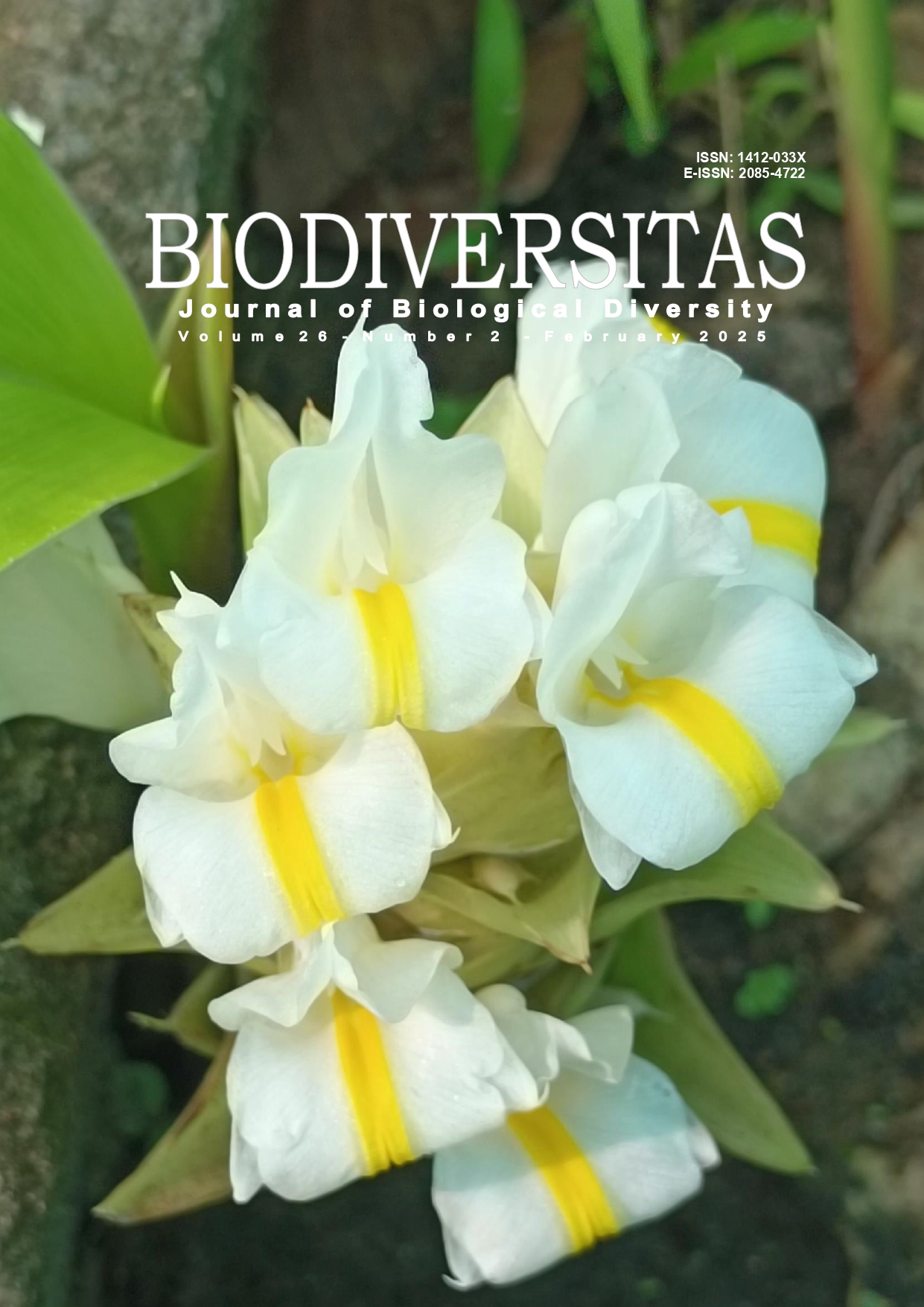Molecular and risk-based approaches to the status of Goldbanded Jobfish Pristipomoides multidens (Day, 1871) in Kupang, Indonesia
##plugins.themes.bootstrap3.article.main##
Abstract
Abstract. Wijayanti DP, Indrayanti E, Haryanti D, Wijayanti MK, Elmir ZG, Fachri FR, Bhagooli R, Nozawa Y. 2025. Molecular and risk-based approaches to the status of Goldbanded Jobfish Pristipomoides multidens (Day, 1871) in Kupang, Indonesia. Biodiversitas 26: 928-940. Snappers are economically valuable and important fishing activities in Indonesia. However, the lack of data on the stock status contributes to the uncertainty of the sustainability of the fisheries. We employed the Cytochrome C Oxidase subunit I (COI) mtDNA gene to analyze the genetic diversity of the fish in combination with the Risk-Based Framework (RBF) methods of the Marine Stewardship Council (MSC) to assess the status of the Goldbanded jobfish (Pristipomoides multidens, Day, 1871) fishery at Kupang, East Nusa Tenggara. Results indicated that all specimens collected from Kupang District belong to Pristipomoides multidens (Day, 1871), forming 2 clades. The clades have a low genetic distance, which likely suggests the fish are caught from the same fishing area. The phylogenetic tree reconstruction indicated potential genetic sub-divisions in the snapper population in the Timor Sea. The Risk-Based Framework approach showed the risk potency of the fishing activity has a low effect on the Goldbanded Jobfish, the baitfishes such as mackerel tuna, scads, Indian mackerel and squids, and most of the by-catch fishes. The final MSC score for the Goldbanded Jobfish fishery was 74, below the MSC £80 guide post, suggesting a medium risk potential faced by the fishery. Therefore, catch regulations, such as harvest control rules or open-close fishing should be applied to sustain the fishery.

